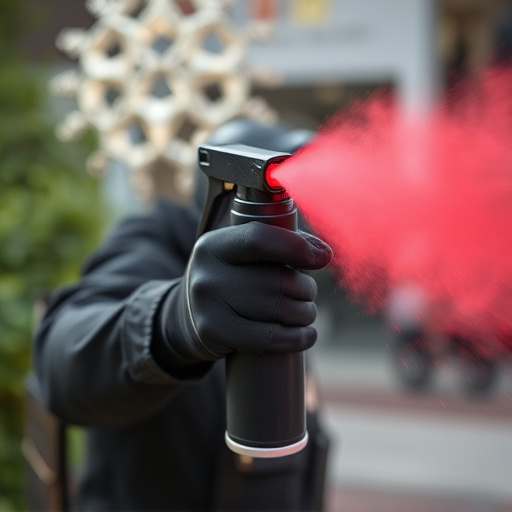Pepper spray effectiveness varies across climates, with humid conditions reducing its range and dry/windy environments extending it. Warmer climates speed evaporation, while colder temperatures affect canister performance. Law enforcement must adapt strategies based on local weather for reliable crowd control. Some countries innovate with systems tailored to diverse meteorological conditions.
In recent years, pepper spray has emerged as a common tool for crowd control by law enforcement agencies worldwide. However, its effectiveness remains a subject of debate, particularly in varying climates. This article delves into the intricacies of pepper spray usage, exploring its impact across different environments. We examine global perspectives on this controversial tactic and analyze how weather conditions can significantly influence its performance.
- Pepper Spray: A Force for Crowd Control?
- Weather's Impact: Spray Effectiveness in Different Climates
- Global Perspectives: How Countries Use Pepper Spray Differently
Pepper Spray: A Force for Crowd Control?
Pepper spray, a controversial crowd control measure, has been a subject of debate for its effectiveness and use in various environments. It is a chemical agent designed to temporarily disable individuals by causing pain, tearing, and difficulty breathing when sprayed directly into the face. While some argue that it’s an essential tool for law enforcement to maintain public safety, others question its overall impact on crowd management.
The effectiveness of pepper spray depends on multiple factors, including weather conditions. In different climates, its performance can vary significantly. For instance, in humid environments, the spray may dissipate faster due to increased moisture in the air, reducing its impact. Conversely, dry and windy conditions can prolong the spray’s reach and duration, making it more potent. This variability raises concerns about its reliability as a universal crowd control solution, especially when tactical decisions need to be made swiftly based on dynamic, often unpredictable, circumstances.
Weather's Impact: Spray Effectiveness in Different Climates
The effectiveness of pepper spray in crowd control can vary significantly across different climates and weather conditions. In dry, hot environments, pepper spray tends to be more potent as the low humidity allows the active ingredients to remain airborne for longer periods, affecting a larger area. Conversely, in humid or wet climates, the spray’s range and potency may diminish due to rapid evaporation and dilution.
Cold temperatures can also impact performance; when the temperature drops below freezing, pepper spray can become less effective as the cold can cause the solution to freeze or solidify within the canister, reducing its pressure and dispersement. In contrast, very windy conditions can spread the spray more widely, potentially reducing its direct impact but increasing the area affected. Understanding these climate-related factors is crucial for law enforcement agencies when deciding whether and how to deploy pepper spray in various geographical locations.
Global Perspectives: How Countries Use Pepper Spray Differently
The effectiveness of pepper spray in crowd control varies across different countries and climates, reflecting global perspectives on law enforcement tactics. In regions with warmer, more humid climates, pepper spray is often seen as a less reliable option due to its potential rapid evaporation, affecting its concentration and impact. Conversely, colder environments may present challenges for the spray’s active ingredients to stay airborne, requiring specialized formulations designed for optimal performance in specific weather conditions.
Some countries have adopted innovative strategies to overcome these limitations, integrating advanced delivery systems and tailored chemical compounds. For instance, law enforcement agencies in certain Asian nations have developed pepper spray canisters that use pressurized air for more precise and sustained dispersion, enhancing their effectiveness in diverse meteorological scenarios. These global variations highlight the importance of adapting crowd control methods not just based on local needs but also considering the unique environmental factors that influence the performance of tools like pepper spray.
While pepper spray has proven effective as a crowd control measure in various settings, its performance varies significantly across different climates. Understanding the impact of weather conditions is crucial for optimal deployment. Additionally, global variations in usage highlight the need for context-specific strategies. By exploring these factors, we can ensure that law enforcement utilizes pepper spray responsibly and efficiently, balancing public safety with community well-being.
